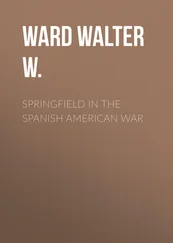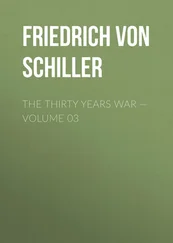The position selected by Taylor was admirably suited to this emergency. Scott, though a Whig, wrote out a long explanation, showing that on the Rio Grande the army had a more healthful camp than before, better drinking water, more abundant fuel, better grazing and a better port. Information could be obtained more quickly; the border watched more closely; an invading force pursued more promptly; and its line of retreat cut more certainly. Besides, the river amounted to a great breastwork, for this part of it could be crossed with safety at only certain points, and a body of men, even though comparatively small, could not cross anywhere on its lower course without peril. It was not, however, simply that the Rio Grande position seemed far the best. The nature of the region made it essential. Taylor had to be in that vicinity or else near Corpus Christi, and for purposes of defence the latter point could not be deemed satisfactory. Now the necessity of defence was entirely due to the threatening conduct of Mexico. Therefore she could not reasonably complain of our precautions; and if she could not complain, then no one could do so in her name.33
But the challenge was triumphantly thrown out: Can it be denied that our taking a position on the river did in fact cause the war? In view of the data it can and should be denied. First, joint occupation of the disputed region might have gone on peaceably, as occupation of that character has continued elsewhere, but for a distinctly aggressive step on the part of Mexico; and, secondly, for her the Rio Grande had no particular significance. She claimed all of Texas, and intended to drive us from it, if she could. Furthermore, the crass vanity and ambition of Mexican generals and the exigencies of domestic politics would probably have led to an attack upon us, had Taylor remained at Corpus Christi, or even pitched his camp at San Antonio. In spite of express orders, Mejía actually attempted an offensive in the intermediate region. When the Mexican government gave formal notice to England and France in the summer of 1845 that war had become inevitable, our army lay far from the Rio Grande. Taylor’s advance to the Bold River no more produced the war than Pitcairn’s march to Lexington produced the American revolution. It was an effect and an occasion, but not a cause.34
Finally, as a matter of fact, the hostilities were deliberately precipitated by the will and act of Mexico. The circumstances proved this and testimony illuminates them. In October, 1847, a pamphlet written by Mariano Otero, editor of El Siglo XIX and Senator from the state of Jalisco, appeared. His object was by no means to defend the United States, but he said: “The American forces did not advance to the Rio Grande until after the war became inevitable, and then only as an army of observation.... The military rebellion of San Luis [Potosí] gave rise to a government [that of Paredes] pledged to resist all accommodation [with the United States] ... which government ... began hostilities.” Arista declared in December, 1847, “I had the pleasure of being the first to begin the war.” In short, Polk told only the truth when he said the conflict was forced upon us. Mexico wanted it; Mexico threatened it; Mexico issued orders to wage it; and on April 18 her President, no doubt in view of his political difficulties, insisted upon those orders. “It is indispensable,” he wrote urgently to Arista, “that hostilities begin, yourself taking the initiative.”35
“If in a litigious affair,” declared Vattel, “our adversary refuses the means of bringing the right to proof, or artfully eludes it; if he does not, with good faith, apply to pacific measures for terminating the difference, and above all, if he is the first who begins acts of hostility, he renders just [even] the cause which was before doubtful.” Every condition of this judgment fitted the course of Mexico.36
VIII.
Palo Alto and Resaca de Guerrero
Table of Contents
The Mexico of 1845 had an elaborate military organization. In addition to the comandantes general—regularly one in each department or state—there were six generals at the head of the six military Divisions in which the political divisions of the country had been grouped. The college at Chapultepec provided a full course of instruction for officers; and though it seemed hardly worth while to spend three years there in order to become a second lieutenant, when one could leap at once into a captaincy or something better by acting as the tool of a revolting general, there were never less than one hundred students. 1
At the head of the army stood a sort of general staff called the plana mayor; but the duties of this inefficient body fell mostly to the engineers, some of whom possessed excellent qualifications, while others—admitted to the corps for political or personal reasons—did not. The artillery, which included nominally four brigades with fourteen batteries, suffered from this all-pervading evil and also from defects of its own. Many of the guns had come down from olden times, though a large number of the field pieces equalled any the United States possessed; not a few were honeycombed; and the carriages were mostly of the old Gribeauval pattern. To convey ammunition, carts had to be obtained when needed. For the transportation of ordnance, mules or oxen were usually hired by contract; and, as the drivers had no acquaintance with artillery drill and tactics, battery evolutions were out of the question, and guns could be moved but slowly, if at all, during an engagement. 1
The so-called Permanent infantry consisted substantially of three Light ( Ligero ) and twelve Line regiments, and there were also twenty-five Active ( Activo ) corps, large or small, which, though originally designed as a sort of reserve to be called out in emergencies, were now constantly under arms. Owing to the great extent of the country the regiments were broken into sections, which assumed to be independent; and for this reason drill, discipline and esprit de corps suffered greatly. Training and equipment left much to be desired. When four simple manoeuvres were understood, soldiers were pronounced perfect. For arms almost all the infantry had flint-lock muskets, many of which had been discarded by the British army. Firing from the hip to avoid the recoil marred their aim; and, partly in consequence of using too much powder, they generally fired high. Of horse there were ten Permanent and five Activo regiments besides numerous minor units. The cavalry included also nearly fifty Presidial companies, originally designed to guard the frontier against Indian raids; but these had almost vanished except in name, and the remnants were extremely inefficient. The mounted men carried in general a sword and a sort of blunderbuss called the escopeta , but many used lances instead of swords. About 3000 Coast Guards are also to be mentioned, but as a rule they were expected merely to defend the ports where they lived and the immediate vicinity. In all there may have been 32,000 men under arms in 1845. 1
The medical corps suffered at all times from the low quality of its personnel and from its defective equipment; and the accommodations for surgeons in a campaign were so poor that many found pretexts for remaining behind when their corps took the field. The commissaries had peculiar difficulties to meet. A Mexican army drew supplies from places near it and not from government dépôts; and when money failed, as it often did, payments had to be made with drafts on the treasury, which possessed an uncertain value. Hence people often would not part with supplies, the troops went hungry, and the natural tendency toward inefficiency and desertion was accentuated. In order to release the army from service in the interior, when hostilities became imminent in 1845, it was decided to organize volunteer corps; but almost every one, however anxious to see the United States chastised, preferred to let somebody else do the work. 1
Читать дальше












